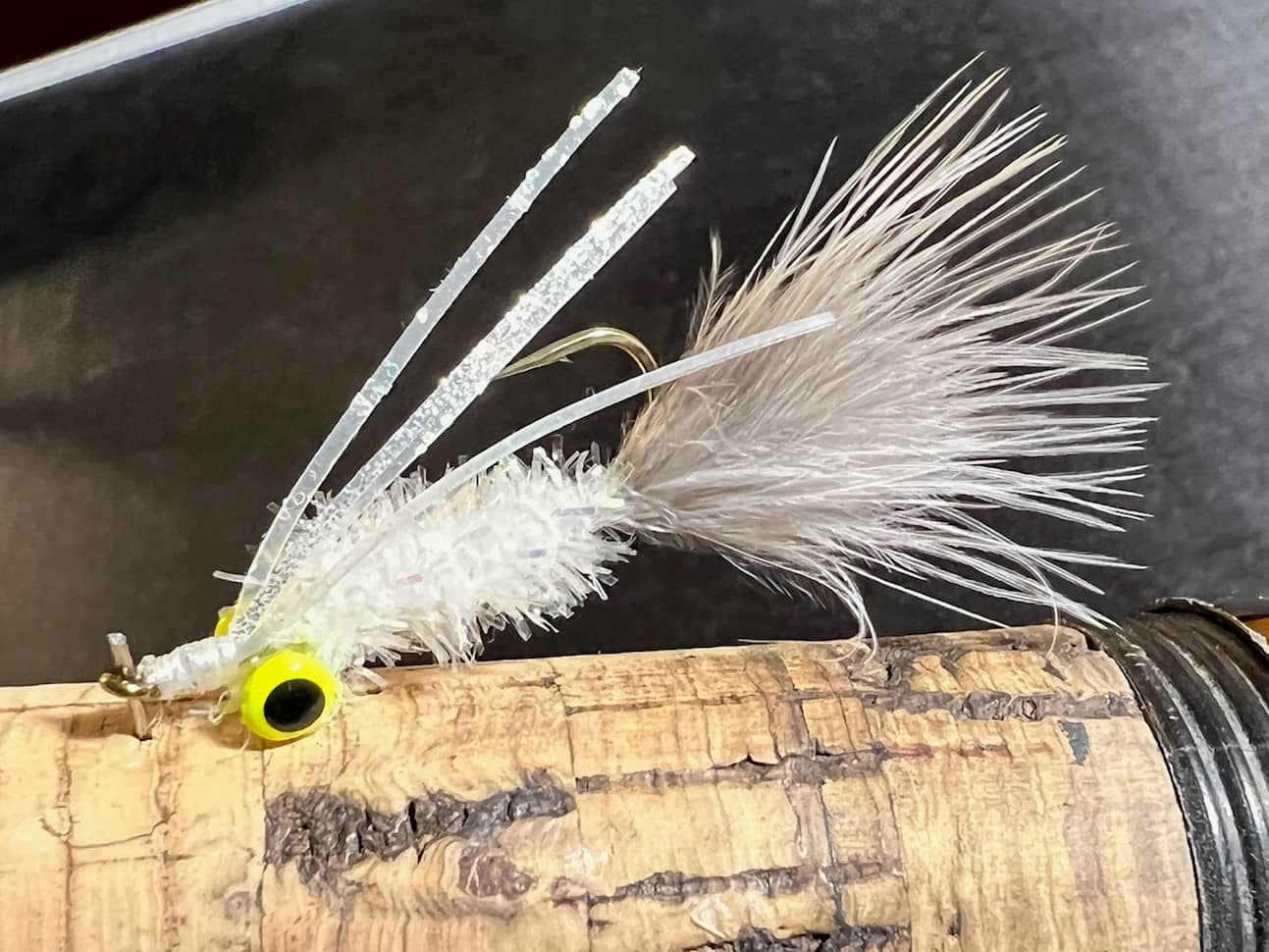
The Crappie Crush tied by Nick Simonson
By Nick Simonson
Crappies are baitfish feeders, and where “half-inch brown and buggy” is the rule of thumb for general trout flies, that guide can be adjusted for spring and summer slabs to “inch long, flashy, and fishy” for successful patterns.
Thus, tying up a variety of streamers that somewhat match that rule for the hatches that specks inhale is key to continued success. The Crappie Crush fly combines all those classic accoutrements that slabs love – flowy marabou, sparkly estaz and some undulating plastic – and brings them all together in a fish-catching streamer that meets the mandates for a solid offering when searching for spring and summertime specks.
MATERIALS
Hook: 2XL Streamer Size 12-6
Thread: 6/0 White
Eyes: Barbells
Tail: Silver/White Grouse Marabou
Body: Pearl Estaz
Legs: Pearl Sili Legs
CLICK HERE FOR STEP-BY-STEP TUTORIAL
OR WATCH THE VIDEO TUTORIAL ON DAKOTA EDGE OUTDOORS’ YOU TUBE CHANNEL!
Start the fly by tying in a pair of barbell eyes on the top of the hook about two hook-eye lengths behind the eye, leaving room to finish the fly. Secure the barbell eyes to the shank with a number of figure-eight wraps and then add a drop of head cement to lock them in place (1). Note that they will flip the hook in the water and it will ride point up when it is cast out and retrieved, and can be worked with an enticing jigging motion as a result.
Next, tie in a tail of marabou, here it’s a tuft from a late season sharptailed grouse to give it a little silver-gray baitfish accent, but any marabou that might be on hand will work, or switch the color up and adjust the rest of the pattern to match, knowing that crappies can key in on various hues depending on the day, the food source and the time of year. The tail should be about the same length as the hook (2). Next, tie in a strand of white estaz to form the body (3). Wrap the estaz up and just over the barbell eyes and tie it off in front of them in the space behind the hook eye (4).
At that point, flip the hook over and tie in four rubber silicone legs angling back over the hook point, securing them down on the hook shank behind the hook eye, right up to the barbells, so that they start to arch up and over toward the back of the fly (5). Trim the legs so they’re just a little longer than the hook, and then form a small thread head securing them down behind the hook eye; whip finish, add a drop of head cement and the Crappie Crush streamer is complete (6).
The weight of the fly can be adjusted by substituting bead chain eyes in place of the barbells used in this example. Going lighter is a good idea for spring, when crappies are up shallow and getting ready to spawn. When they drop back into the depths, or get into a summer feeding pattern, go with the heavier eye option to explore the water column and connect. Get creative with the colors for the body, tail and legs and tie up a bunch of these streamers in various combinations to key in on what the fish might be wanting during a particular outing. It isn’t unusual with crappies to have one configuration of the same lure significantly outperform another, simply by shifting one color in the offering.
Sticking to that basic tenet of “inch-long, flashy, and fishy,” as the Crappie Crush does, will likely bring success for big slabs on the long rod.
